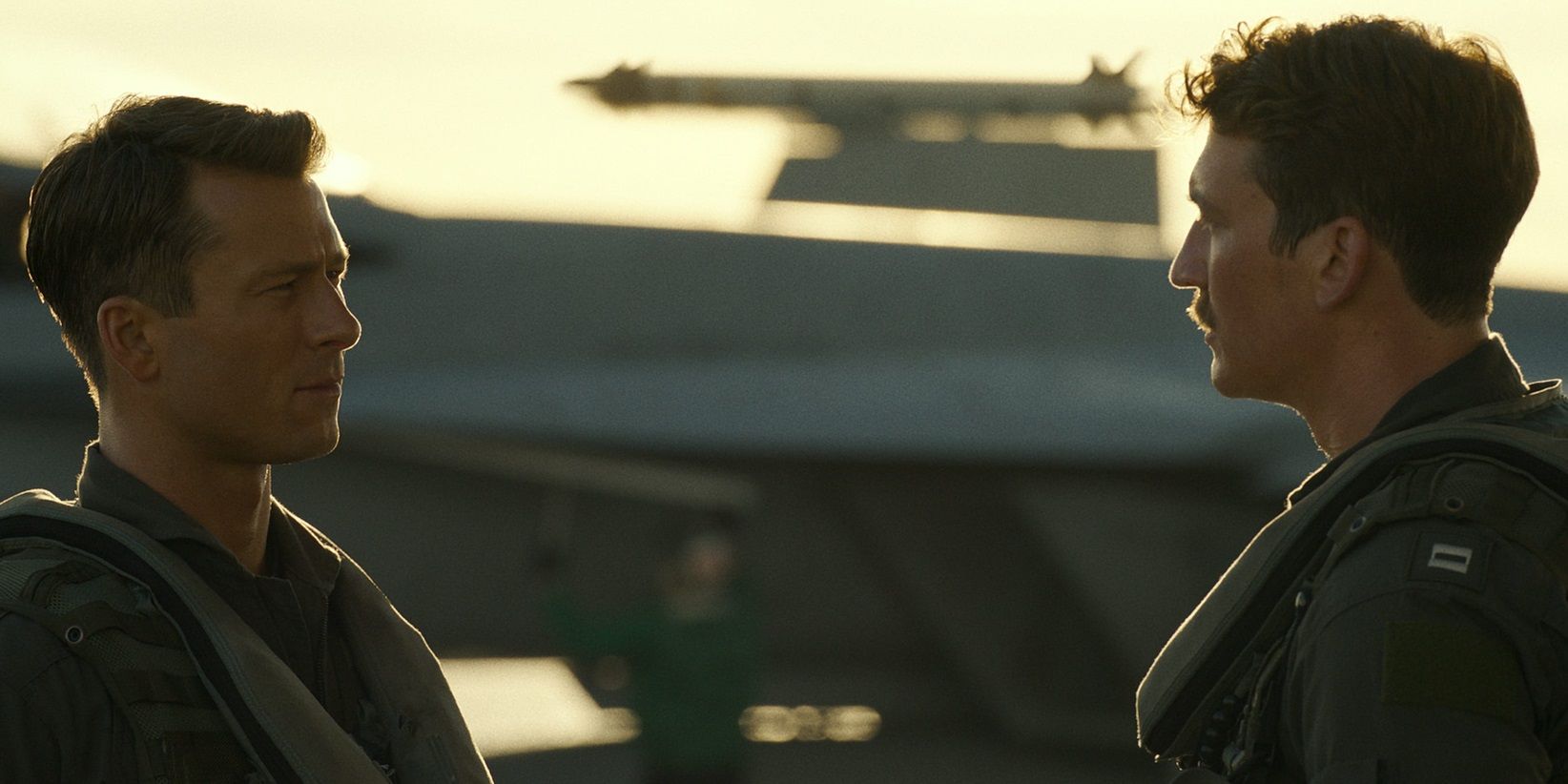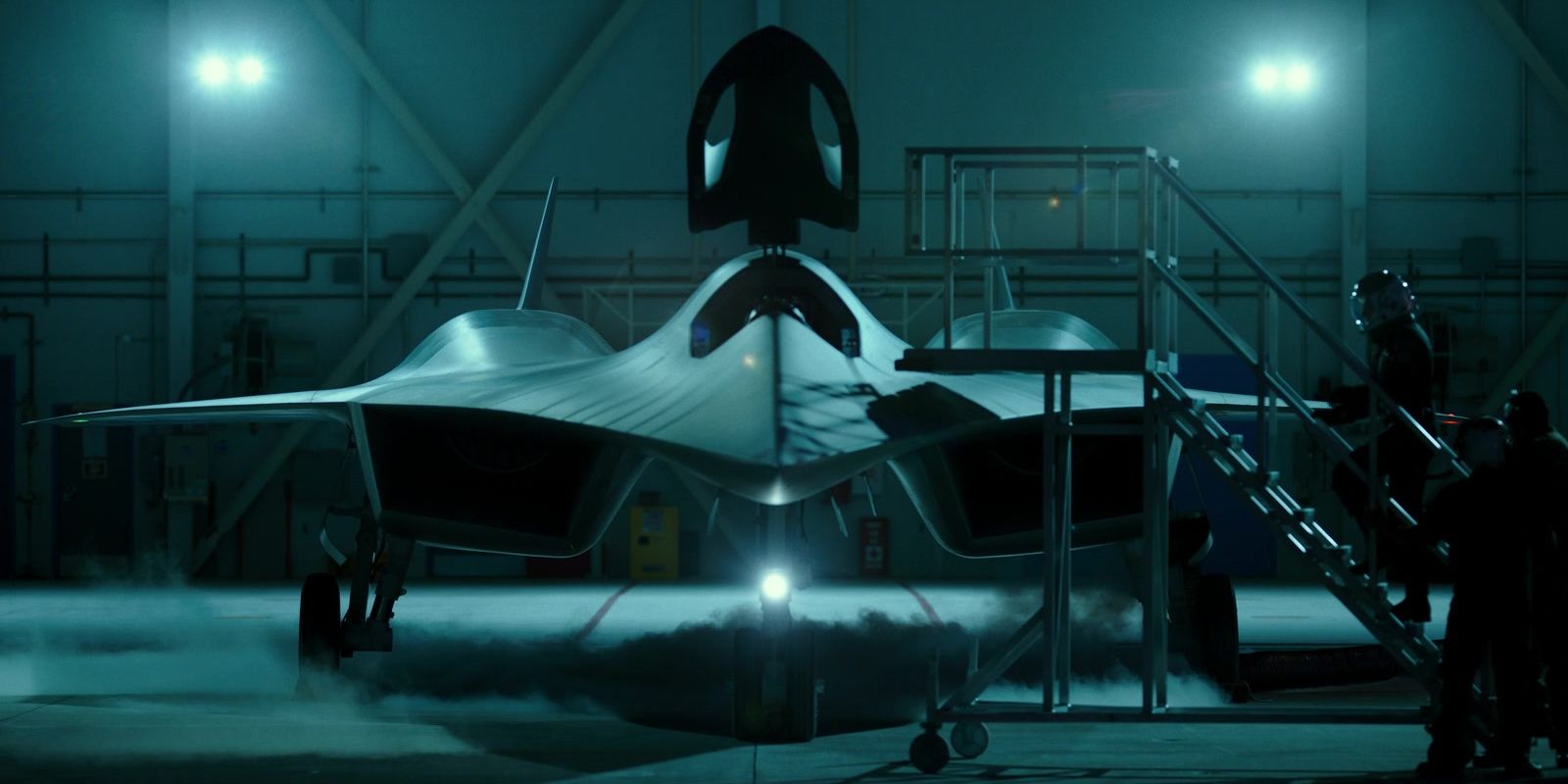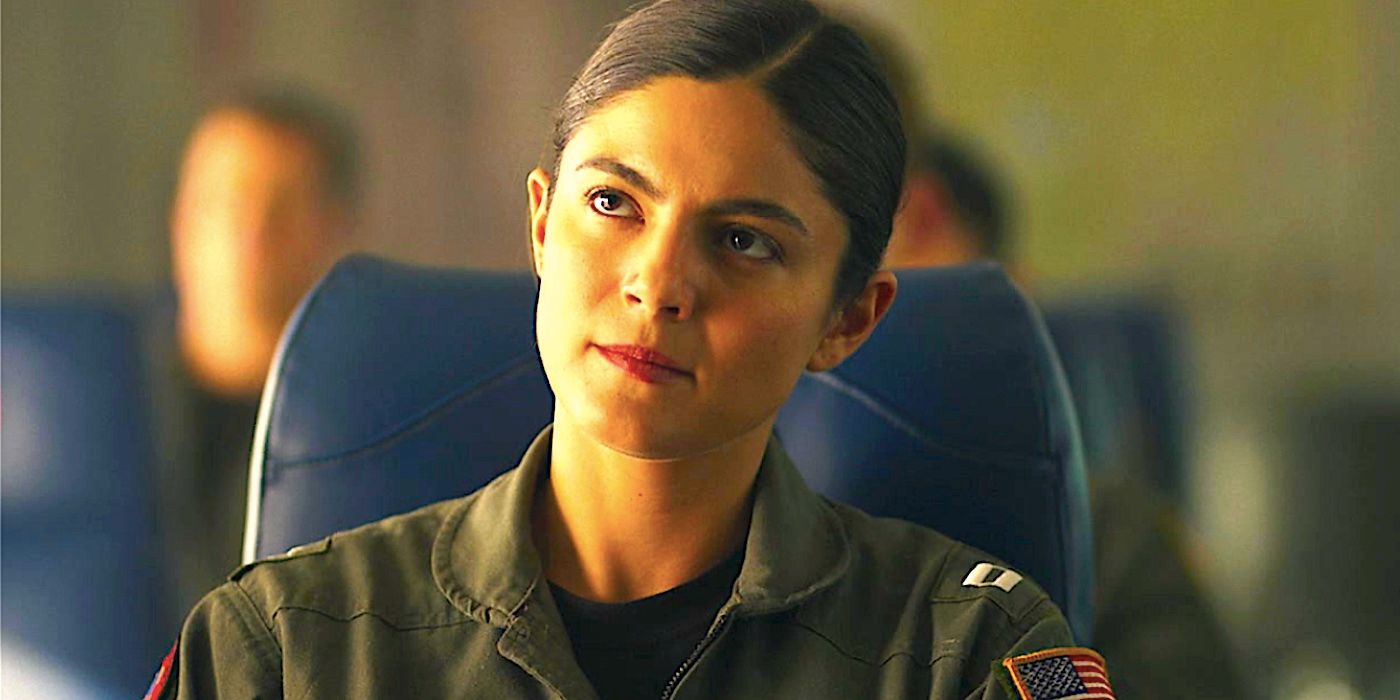The characters in Top Gun: Maverick refer to the enemy jets they face as “fifth-generation fighters” numerous times, prompting viewers to wonder what the technology is and why it’s so superior. The Top Gun movies were made with the endorsement of the U.S. Navy, meaning the filmmakers got access to all manner of hardware and technical know-how while working on them. While this isn’t unusual for major Hollywood blockbusters, what is notable is just how much Top Gun: Maverick focuses on the fighter jets used by both the heroes and their nameless, faceless enemies. The villains don’t have a named country, but they do have advanced technology.
While Top Gun: Maverick’s ending does see Maverick and Rooster fly a comically outdated F014 Tomcat to safety, most of the sequel’s action unfolds in much more modern jets. Despite this, the heroes face a surprising disadvantage throughout the story. Early on, Maverick decides that his team will fly a pair of F/A-18E/F Super Hornets into the enemy base. However, the enemy’s plant is protected by fifth-generation Su-57 fighter jets. The distinction between these advanced models and the more antiquated, third-generation F/A-18E/F Super Hornets is pretty pivotal in Top Gun: Maverick’s finale.
5th Generation Fighters In Top Gun: Maverick Explained
Top Gun: Maverick’s enemy jets are among the most advanced in the world
The jet model seen in Top Gun: Maverick’s ending is never explicitly named onscreen, although “Su-57” can be glimpsed on a whiteboard seen in the background of a briefing scene. The Sukhoi Su-57 is a real-life fifth-generation fighter jet developed by the Russian manufacturer, Sukhoi. As noted by the YouTube channel ArmorCast, the Su-57 is one of only six fifth-generation models in existence. The others are the American F-35 Lightning and F-22 Raptor and the Chengdu J-20 and Shenyang FC-31, both of which were developed in China. Of these, only the Sukhoi Su-57 can be seen in Top Gun: Maverick’s ending.
While Top Gun 3‘s story might tell viewers more about them, Top Gun: Maverick features remarkably little discussion of the aircraft’s capabilities. Like most fifth-generation fighters, Su-57s boast radar-absorbent material designed to minimize their radar return. According to AviationWeek, the Su-57 is less focused on radar-resistant stealth than its American counterparts, however. Furthermore, the aircraft comes equipped with two internal weapon bays. These carry both precision-guided bombs and short-range missiles. As such, Maverick and Rooster were more than justified when the pair worried about how an F-14 Tomcat would handle against the enemy’s more advanced fifth-generation fighters.
Who Are Top Gun’s 5th-Generation Fighters Based On In Reality
The Sukhoi Su-57 is a real-life fighter jet developed in Russia

As noted above, Top Gun: Maverick’s enemy aircraft is never named onscreen. Since their design is cribbed from the Su-57, this could be an attempt to distinguish the movie’s rogue nation from Russia. As there are no countries that have verifiably bought Su-57s to date, naming the aircraft would amount to naming Russia as the movie’s otherwise unidentified villainous state. The Top Gun franchise has a tradition of keeping its enemy nations anonymous, presumably so the movies don’t age badly thanks to their reliance on real-life geopolitical conflicts that can shift and change quickly. As such, these Su-57s come from no known nation.
Nonetheless, the fifth-generation fighters seen in Top Gun: Maverick do appear to be Su-57s judging by the whiteboard writing seen in the movie. The jets used in the movie are obviously not real Su-57s, but their described capabilities do mimic those of the real-life Russian aircraft. The reason that the model was chosen might be because the Su-57 has slightly less impressive stealth technology than its American counterparts, making Hangman’s eventual heroism more believable. Alternatively, it could also be because using the American F-35 Lightning would remind viewers that over a dozen countries have expressed interest or procured these aircraft from Lockheed Martin, thus giving viewers a list of potential suspect countries.
The 5th-Generation Fighter’s Top Specs & Capabilities Explained
All 5th-generation fighters have improved stealth technologies, weapon bays, and radar resistance

In comparison with the 4th-generation fighters that preceded it, the Sukhoi Su-57 and every fifth-generation model includes a more streamlined design focused on radar evasion, internal weapons bays, and multirole functionality. This last element is particularly important as fifth-generation aircraft are designed to inhabit multiple roles in air combat whereas earlier jets were designed with specific, individualized purposes in mind. The Top Gun sequel’s original proposed plot line focused on how these technological advancements, alongside the simultaneous advent of drone warfare, have made test pilots like Maverick less relevant in the contemporary era of aviation.
However, Top Gun: Maverick’s eventual story moved away from this theme, with Maverick and his charges flying third-generation jets precisely so the sequel could focus on their prowess and not the technology they relied on. Although Top Gun: Maverick functioned as a glossy advertisement for the Navy, the sequel didn’t foreground the most impressive technology available to the institution. The only fifth-generation fighters seen in the movie are flown by enemy pilots even though, contrary to Top Gun: Maverick’s story, the U.S. has a far larger and more diverse array of fighter jets at its disposal than any other military on Earth.
What The 5th-Generation Fighter From Top Gun Improves From A 4th-Gen Fighter
5th-generation fighters are more concerned with stealth than their predecessors

Fifth-generation fighters are more focused on stealth than close-range fighting mostly because the long-range missiles originally developed for fourth-generation fighters largely rendered dogfighting a thing of the past. Conversely, fifth-generation fighters also prioritize maneuverability, which is why most models boast thrust vectoring. This state-of-the-art technology allows them to pull off previously impossible moves such as the stunt pulled by the Su-57 seen in Top Gun: Maverick’s ending, although this doesn’t stop Hangman from neutralizing their threat. Notably, the American F-35 does not have thrust vectoring, making the aircraft’s ability to switch course slightly slower than its competitors.
Where the fourth-generation was mostly concerned with maximizing an aircraft model’s weapon payload and ease of control, fifth-generation fighters are more focused on evading the extremely effective radar technology developed for the preceding generation. Although both fourth and fifth-generation aircraft feature impressive maneuverability, the omnipresence of long-range missiles has made this function less central to the design of fifth-generation fighters. Thus, Top Gun: Maverick’s enemy aircraft would be a lot harder for the heroes to detect and tougher to deflect, but less heavy and less heavily armed than their predecessors.




